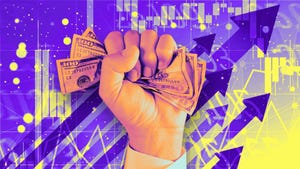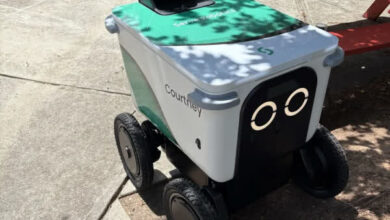Don’t Wait to Grab High-Yield Savings Account Rates as High as 5.45% APY, Aug. 5, 2024

Article updated on Aug 05, 2024
Why You Can Trust CNET Money
Our mission is to help you make informed financial decisions, and we hold ourselves to strict . This post may contain links to products from our partners, which may earn us a commission. Here’s a more detailed explanation of .


Written by

Tiffany Wendeln Connors is a senior editor for CNET Money with a focus on credit cards. Previously, she covered personal finance topics as a writer and editor at The Penny Hoarder. She is passionate about helping people make the best money decisions for themselves and their families. She graduated from Bowling Green State University with a bachelor’s degree in journalism and has been a writer and editor for publications including the New York Post, Women’s Running magazine and Soap Opera Digest. When she isn’t working, you can find her enjoying life in St. Petersburg, Florida, with her husband, daughter and a very needy dog.
Edited by

Courtney Johnston
Senior Editor
Courtney Johnston is a senior editor leading the CNET Money team. Passionate about financial literacy and inclusion, she has a decade of experience as a freelance journalist covering policy, financial news, real estate and investing. A New Jersey native, she graduated with an M.A. in English Literature and Professional Writing from the University of Indianapolis, where she also worked as a graduate writing instructor.
CNET staff — not advertisers, partners or business interests — determine how we review the products and services we cover. If you buy through our links, we may get paid.


CNET staff — not advertisers, partners or business interests — determine how we review the products and services we cover. If you buy through our links, we may get paid.
Why You Can Trust CNET Money
Our mission is to help you make informed financial decisions, and we hold ourselves to strict . This post may contain links to products from our partners, which may earn us a commission. Here’s a more detailed explanation of .

Getty Images/Tharon Green/CNET
Key Takeaways
- There’s still time to maximize your savings with a high-yield savings account earning as much as 5.45% APY.
- The Fed held rates steady last week, but it’s expected to make a cut as early as September. When it does, savings account APYs will likely follow suit.
- Today’s top high-yield savings accounts offer rates more than 10 times the national average.
If you’re keeping your emergency fund in a traditional savings account, you’re not maximizing your interest-earning potential. The best high-yield savings accounts earn annual percentage yields as high as 5.45%, more than 10 times the national average.
Amid signs that inflation is finally cooling, now is the time to grow your savings with a high-yield savings account.
“Many high-yield savings accounts are giving depositors a return greater than today’s rate of inflation,” said Christopher M. Naghib, executive vice president of First Foundation Bank.
But you need to act now, as most experts expect the Fed to lower rates at its September meeting. That will likely trigger a decline in savings account rates. Don’t wait to take advantage of high rates to maximize your interest earnings.
Here are CNET’s picks for the banks offering the best savings account interest rates right now.
Today’s best savings rates
Here are some of the top savings account APYs available right now:
| Bank | APY | Min. deposit to open |
| My Banking Direct | 5.45% | $500 |
| Newtek Bank | 5.25% | $0 |
| UFB Direct | 5.25% | $0 |
| TAB Bank | 5.02% | $0 |
| Synchrony Bank | 4.75% | $0 |
| Capital One | 4.25% | $0 |
| Discover Bank | 4.25% | $0 |
| Ally Bank | 4.20% | $0 |
Experts recommend comparing rates before opening a savings account to get the best APY possible. You can enter your information below to see CNET’s partners’ rates in your area.
How are savings rates affected by the Fed?
The Federal Reserve doesn’t directly impact savings rates, but its decisions do have ripple effects. When the central bank meets, it assesses the US economy and may adjust the federal funds rate to help boost growth or slow down inflation. Banks tend to follow, increasing or decreasing their short-term rates according to how the Fed votes.
After the Federal Open Market Committee’s meeting last week, Fed Chair Jerome Powell noted that interest rate cuts “could be on the table at the September meeting.”
Starting in March 2022, the Fed raised rates 11 times to fight record inflation. However, as inflation began cooling in late 2023, the Fed paused rates. As a result, savings rates remained attractive, staying high for months.
But with three meetings left this year, some experts predict that the Fed could still make multiple cuts in 2024. And we’re already starting to see banks lower APYs in anticipation. Over the past few weeks, we’ve seen My Banking Direct, Laurel Road, TAB Bank, Rising Bank and UFB Direct lower rates on their high-yield savings accounts.
Here’s where savings rates stand compared to last week:
| Last week’s CNET average savings APY | This week’s CNET average savings APY | Weekly change | |
| 4.87% | 4.86% | -0.01% |
Weekly percentage increase/decrease from July 22, 2024, to July 29, 2024.
CNET Money brings financial insights, trends and news to your inbox every Wednesday.
By signing up, you will receive newsletters and promotional content and agree to our Terms of Use and acknowledge the data practices in our Privacy Policy. You may unsubscribe at any time.
Here’s all of the excitement headed to your inbox.
What to consider when picking a high-yield savings account
It pays to look for accounts with attractive APYs. But don’t stop there. Weigh these important factors to find an account that complements your financial goals:
- Minimum deposit requirements: Some HYSAs require a minimum amount to open an account — typically, from $25 to $100. Others don’t require anything.
- ATM access: Not every bank offers cash deposits and withdrawals. If you need regular ATM access, check to see if your bank offers ATM fee reimbursements or a wide range of in-network ATMs, said Lanesha Mohip, founder of the Polished CFO and CNET expert review board member.
- Fees: Look out for fees for monthly maintenance, withdrawals and paper statements, said Mohip. The charges can eat into your balance.
- Accessibility: If you prefer in-person assistance, look for a bank with physical branches. If you’re comfortable managing your money digitally, consider an online bank.
- Withdrawal limits: Some banks charge an excess withdrawal fee if you make more than six monthly withdrawals. If you think you may need to make more, consider a bank without this limit.
- Federal deposit insurance: Make sure your bank or credit union is either insured with the FDIC or the NCUA. This way, your money is protected up to $250,000 per account holder, per category, if there’s a bank failure.
- Customer service: Choose a bank that’s responsive and makes it easy to get help with your account if you need it. Read online customer reviews and contact the bank’s customer service to get a feel for working with the bank.
Methodology
CNET reviewed savings accounts at more than 50 traditional and online banks, credit unions and financial institutions with nationwide services. Each account received a score between one (lowest) and five (highest). The savings accounts listed here are all insured up to $250,000 per person, per account category, per institution, by the FDIC or NCUA.
CNET evaluates the best savings accounts using a set of established criteria that compares annual percentage yields, monthly fees, minimum deposits or balances and access to physical branches. None of the banks on our list charge monthly maintenance fees. An account will rank higher for offering any of the following perks:
- Account bonuses
- Automated savings features
- Wealth management consulting/coaching services
- Cash deposits
- Extensive ATM networks and/or ATM rebates for out-of-network ATM use
A savings account may be rated lower if it doesn’t have an easy-to-navigate website or if it doesn’t offer helpful features like an ATM card. Accounts that impose restrictive residency requirements or fees for exceeding monthly transaction limits may also be rated lower.
Recommended Articles

Written by
Tiffany Connors
Editor
Tiffany Wendeln Connors is a senior editor for CNET Money with a focus on credit cards. Previously, she covered personal finance topics as a writer and editor at The Penny Hoarder. She is passionate about helping people make the best money decisions for themselves and their families. She graduated from Bowling Green State University with a bachelor’s degree in journalism and has been a writer and editor for publications including the New York Post, Women’s Running magazine and Soap Opera Digest. When she isn’t working, you can find her enjoying life in St. Petersburg, Florida, with her husband, daughter and a very needy dog.


